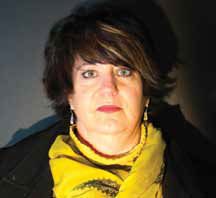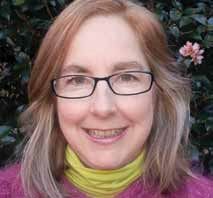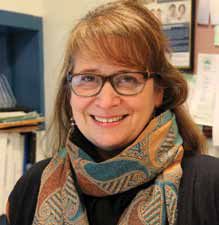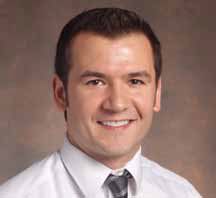Making their Mark
Lucky students at the School District of West De Pere (WI) have an advanced technology maker space in their high school library called the Innovation Studio, thanks to Mike Slowinski, library media and technology coordinator. “I created this studio for students to get hands-on experiences with emerging technologies such as 3D printing, 3D scanning, virtual reality, robotics, animation, and 3D modeling,” says Slowinski. The projects created in the Innovation Studio are based on students’ interests. Slowinski acts as a guide to help them learn how to use the equipment and acquire materials. “In the first two months of school, students created a 3D-printed chess set and playing board, interactive 3D scans of car parts, movies with special effects using the green screen, a 3D-printed globe, and a touch screen table made out of acrylic, a projector, and a PlayStation eye,” he says. The Innovation Studio is also being used as an extension of various courses and curricula, and Slowinski is working with science, art, and technology teachers to integrate 3D modeling, printing, and scanning into their classes. Find out more at sites.google.com/a/wdpsd.com/westde-pere-high-school-library/innovating/innovation-studio.
Training Future Technologists
“I believe technology is the great leveler of education and that students from any background can change their proficiency based on technology,” says Laurie Denk, advanced technology teacher at Smoky Valley High School in Kansas and one of the developers of Vision_Tek, a technology initiative that provides access to technology skills. Vision_ Tek, which is open to all students, is a series of courses on software, networking, PC maintenance, and presentation skills. As part of their work, Smoky Valley students provide workshops, one-to-one instruction, basic troubleshooting, and general technology assistance for community members. The program is overseen by a board made up of third- and fourth-year IT students with support from district- and building-level staff. Denk designed the two-tiered curriculum, which starts with a tech boot camp that covers Web literacy, application and equipment proficiency, and independent project development. In level two, students learn to develop work plans, resources, and work flow. “The work ranges from learning to code to building a homemade hovercraft. Each student develops a professional portfolio,” says Denk. Perhaps best of all, the course work is showcased on the district’s YouTube channel and presentations are livestreamed via UStreamTV.

Making Technology Accessible to Every Student
Ann Kohler is passionate about technology and has worked hard to infuse it into her self-contained class of mildly-intellectually disabled students at South Forsyth High School in Georgia. From teaching math to conducting formal assessments, Kohler’s use of technology has brought positive results to her students. In fact, after using MobyMath for one year, her students’ math placement levels increased, on average, by one grade level or more. These testing results were brought to the attention of county-level administrators and helped influence the purchase of a full-district license so that teachers could use MobyMath for all K-8 students who needed individualized and differentiated math instruction. Kohler’s students have participated in more than a dozen BYOT tours, telling educators and administrators from all over the United States what they like about using technology to learn. “This student population has not traditionally been treated as ‘equals’ with their general education peers in the school setting, but through the use of technology in our classroom, the playing field is being leveled and it is allowing them to participate in their community and the world like never before,” says Kohler.

After-school Enrichment
When Ana-Marie Campos, director of the Computer Resource Centers (CRCs) for New York City Parks and Recreation, received a $2.2 million ARRA grant from NYC DOITT to expand the Broadband Technology Opportunities program to New Yorkers, she was able to update 11 CRCs with more than 200 workstations and state-of- the-art software, hire 11 full-time technology educators, and expand after-school technology resources for more than 1,500 youth per week. Each week, CRCs serve more than 2,500 six- to 17-year-olds in search of homework help, creative outlets, or high school credit opportunities. In late 2012, Campos secured an additional $660,000 for a pilot program called DigitalWork NYC. This grant, administered by the NYC Economic Development Corporation, allowed her to start a certification-based training and online work opportunity for unengaged New Yorkers (ages16 and up) looking for additional technological abilities toward their academic and career goals. Campos’ interest in leveraging technology resources for academic enrichment, self-exploration, and community engagement has helped many high school students bridge the gap between high school and college or career or to earn tech credit as they expand their technology and multimedia skill sets. She continues to work on increasing CRC technology capacity by offering instructors free certification in MS Office and Adobe CS6. She has also developed programming for all CRCs focused on digital literacy, multimedia, and workforce development.

Bringing Technology to the Forefront
Since he arrived four years ago, Technology Department Chair Marcus Twyford has revamped the technology curriculum at Mother of Mercy, an all-female Catholic school in Cincinnati, Ohio. He aligned his technology with large projects in other courses, so now students learn about spreadsheets and data collection during their science department data projects. Technology professional development has been reinvigorated, and Twyford is adding blended learning and self-paced projects to allow students greater opportunity for individual exploration. He has expanded project-based learning and students are developing photo ID cards to increase security and streamline systems like library cards and athletic passes. Twyford secured funding for two 3D printers and is teaching 3D design, product design, and manufacturing processes. After receiving Google Apps Trainer certification, he gave every student a Gmail account and is bringing in Google Apps to encourage collaboration. Most recently, he embarked on a 1:1 iPad program. “Marcus has been a relentless advocate for encouraging all the young women of Mercy to understand the role technology plays in all our lives, and [to realize] how each college major and career path is influenced by new and expanding technologies,” says Cara Hyland, admissions director.


